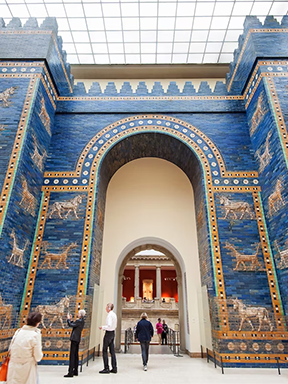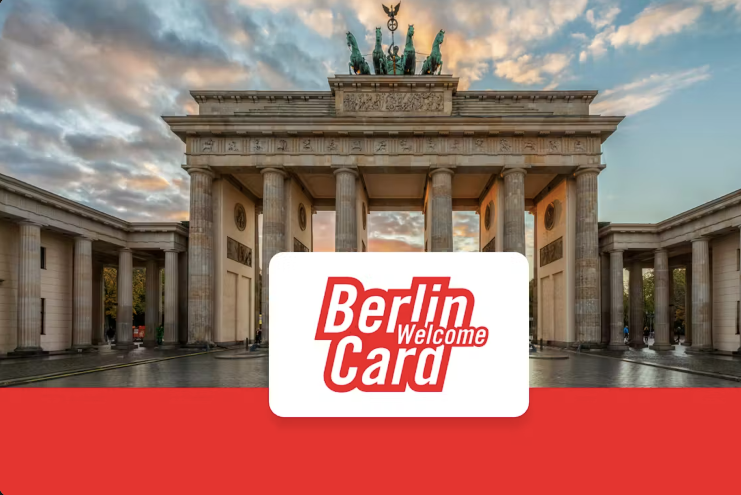ALTE NATIONALGALERIE BERLIN
Find here important information to plan your visit, including the historical and architectural side, collection and opening hours.
HISTORY / ARCHITECTURE
The Historical Journey of the Alte Nationalgalerie Berlin
The Alte Nationalgalerie (lit. Old National Gallery) is a historic building located on Museum Island in the capital city of Germany, Berlin. This gallery is a protected structure and was inscribed on the UNESCO World Heritage List in 1999.
In 1861, the decision to establish the Nationalgalerie Berlin was made following banker Johann Heinrich Wagener's donation of 262 paintings by both German and foreign artists. The donation formed the foundation of the National Gallery, and currently, the gallery continues to host paintings and sculptures from the 19th century.
The Alte Nationalgalerie Berlin (lit. Old National Gallery) was then constructed between 1866 and 1876 based on the plans of Friedrich August Stüler.
Inside Alte Nationalgalerie, you may feel like you have traveled 2500 years back to ancient Athens due to the artworks displayed. The building itself resembles an old temple built in the Prussian Neoclassical style. At the entrance of the gallery, you will be greeted by the magnificent statue of IV. Frederick William on horseback.
The Alte Nationalgalerie Berlin Building's Architectural Side
The Alte Nationalgalerie building was designed by Friedrich August Stüler, with details by Carl Busse, in an architectural style that combines late Neoclassicism with early Neo-Renaissance. Heinrich Strack was responsible for bringing this design to life. They aimed to express the "unity of art, nation, and history".
Therefore, when you look at the Alte Nationalgalerie, you will notice elements reminiscent of both a temple and a church (apse) and a theater (grand staircase). While the exterior of the building retains its original structure, the interior has been renovated multiple times to suit the exhibited artworks.
The Alte Nationalgalerie Collections (Permanent Exhibition)
In this collection, you will encounter world-famous paintings and sculptures from the 19th century at the Alte Nationalgalerie, which is part of Berlin's Museum Island. The Alte Nationalgalerie houses one of Germany's most extensive collections of sculptures and paintings. Within the collection, you will discover traces of Neoclassical and Romantic movements, as well as early hints of Modernism.
You will be able to see works by famous artists such as Caspar David Friedrich, Paul Cézanne, Pierre-Auguste Renoir, Karl Friedrich Schinkel, Karl Blechen, Édouard Manet, Claude Monet, Adolph von Menzel, Max Liebermann, and Lovis Corinth.
Let's get to know these three collections more closely!
1. On the first floor of the Alte Nationalgalerie:
On this floor, you will see Adolph Menzel's works comprehensively. Additionally, you will be able to find Caspar David Friedrich's paintings here as well. The most important feature of the first floor is that Friedrich's paintings convey the message that contemplating nature is a meditative experience.
Furthermore, you will find artworks by artists such as Christian Daniel Rauch, Antonio Canova's sculptures, John Constable, and Gustave Courbet's paintings in this section.
2. On the second floor of the Alte Nationalgalerie:
On this floor, you will find paintings belonging to the Romanticism, Realism, and Impressionism movements. On this floor of the Alte Nationalgalerie Berlin, there are paintings showcasing French and German Impressionism.
Works of famous artists such as Carl Spitzweg, Arnold Böcklin, Hans von Marées, and Anselm Feuerbach are displayed here.
3. On the third floor of the Alte Nationalgalerie:
On this floor, you will be able to see works from the Romantic movement and the Goethe era. These include artworks by Caspar David Friedrich, Karl Friedrich Schinkel, Carl Blechen, and the Nazarene artists, including Peter von Cornelius, Friedrich Wilhelm von Schadow, and Friedrich Overbeck.
Highlights of the collection
- The Balcony Room' and 'Iron Rolling Mill' (Adolph Menzel's paintings)
- 'Double Statue of the Princesses Luise and Friederike of Prussia' (Johann Gottfried Schadow's masterpiece)
- 'Bronze equestrian statue of Friedrich Wilhelm IV sculpted' (by Alexander Calandrelli)
- 'Monk by the Sea' (Caspar David Friedrich's painting)
- 'In Summer' (Pierre-Auguste Renoir's painting)





Alte Nationalgalerie Berlin Tickets & Tours
Germany’s original national gallery.
€ 16.00
Access to Pergamon Museum. Admission to Alte Nationalgalerie and access to exhibitions.
€ 23.96
Explore Berlin with the Berlin WelcomeCard with exclusive access to the 5 museums on Berlin’s Museum Island and free transport in AB and ABC zones.
€ 54.00

Plan Your Visit to the Alte Nationalgalerie Berlin
Location
Bodestraße 1-3, 10178 Berlin
Getting to Alte Nationalgalerie Berlin
- U-Bahn: Museum Island (Museumsinsel) (U5)
- S-Bahn: Friedrichstraße, Hackescher Markt
- Tram: Am Kupfergraben, Hackescher Markt
- Bus: State Opera, Lustgarten
Opening Hours
- Mon closed
- Tue: 10:00 am - 06:00 pm
- Wed: 10:00 am - 06:00 pm
- Thu: 10:00 am - 06:00 pm
- Fri: 10:00 am - 06:00 pm
- Sat: 10:00 am - 06:00 pm
- Sun: 10:00 am - 06:00 pm
Things to Know Before Visiting the Alte Nationalgalerie Berlin
Frequently Asked Questions About Alte Nationalgalerie in Berlin
Nationalgalerie (National Gallery) Berlin was founded as a museum of contemporary art.In 1861, the decision to establish the Nationalgalerie Berlin was made following banker Johann Heinrich Wagener's donation of 262 paintings by both German and foreign artists. The gallery, which is located on Museum Island in Berlin, was inscribed on the UNESCO World Heritage List in 1999. >> Read More about Alte Nationalgalerie
In Berlin's Alte Nationalgalerie, you will discover masterpieces such as 'The Balcony Room' and 'Iron Rolling Mill' (paintings by Adolph Menzel), 'Double Statue of the Princesses Luise and Friederike of Prussia' (a masterpiece by Johann Gottfried Schadow), 'Bronze equestrian statue of Friedrich Wilhelm IV' sculpted by Alexander Calandrelli, 'Monk by the Sea' (a painting by Caspar David Friedrich), and 'In Summer' (a painting by Pierre-Auguste Renoir). >> Read More about Alte Nationalgalerie's Collections (Permanent Exhibition)
The National Gallery Collection contains over 2,300 works, including many famous works, such as van Eyck's Arnolfini Portrait, Velázquez's Rokeby Venus, Turner's Fighting Temeraire and Van Gogh's Sunflowers.
The National Gallery Berlin is over 145 years old.. It was built between 1866 and 1876. Located on Museum Island, the gallery is considered one of the most important museum architectures of the 19th century. You can take a closer look at the history of the Alte Nationalgalerie.




